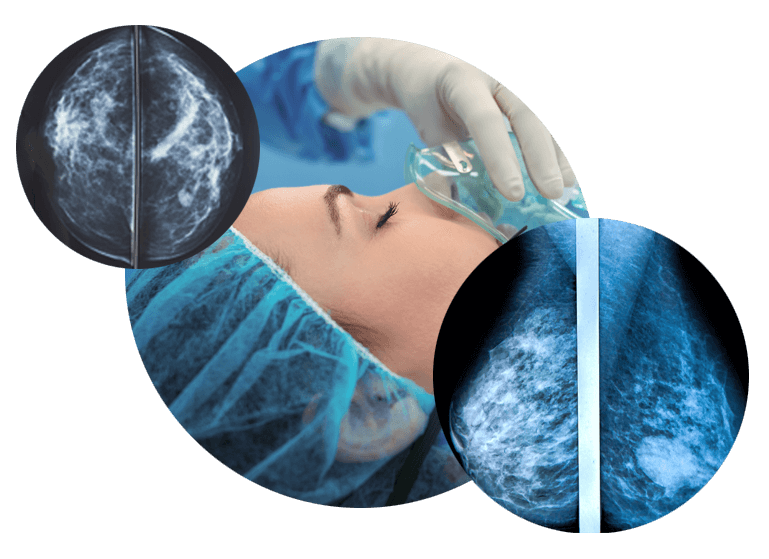Breast Biopsy
Fine Needle aspiration – samples of cells is taken out for microscopic examination.
Core biopsy – Use a large needle to take 1 or more small samples of tissue from the breast. This is a standard way of obtaining the tissue for definitive histology and more tests can be performed, such as the receptor status etc in case of breast malignancy.
Excisional biopsy – Do an operation to take out part or all of the abnormal tissue in operating theatre
You might get a breast biopsy if you or your doctor can feel a change in your breast, or if an area looks abnormal on your breast imaging – eg Mammogram or ultrasound.
What happens during a breast biopsy?
All biopsy should be done under image guidance.
Fine needle biopsy is usually done with ultrasound. A small needle is used to obtain fluid or cells. This is usually performed in doctor’s room and no anaesthetics is required.
Core biopsy is usually done by radiologist under local anaesthetics with a special device with larger bore needle. This will take approximately 30 mins visit to the radiologist.
Stereotactic biopsy is needed when the calcifications is not seen well on ultrasound and only seen on mammogram. During the biopsy, you will be lying face down on a special table with an opening for your breast. The breast which is pressed between 2 metal plates, just like it is during a mammogram. The biopsy is performed using a special needle and the position of needle is checked with X-rays.
In some cases, the lesion can only be done under MRI. This will need to be done at a specialised centre with MRI and with the capability to do the biopsy. For medicare purpose, a second look ultrasound may need to be done prior to the procedure.
After a core biopsy, radiologist may place a clip in your breast to mark where the biopsy was taken. You cannot feel the clip and it will not cause problems during future imaging tests, including airport screening tests. The clip will be removed if a procedure is done. However, if the lesion is benign, the clip will be left in situ as the risk of removal out weighs the risk of leaving in it, which is negligible.
Surgical Open biopsy – For this type of biopsy, you will need to be at a hospital facility for the surgeon to take out the abnormal tissue with a small cut in your breast.
What happens after a breast biopsy?
After a biopsy, you might have bruising, bleeding, or get an infection. These problems are less common with fine or core needle biopsy than after a surgical biopsy. The dressing can be removed after 5 -7 days.
You will likely get the results of your biopsy between 2-7 days depending on where the test is performed. The result will be discussed at the next appointment and appropriate action taken.

